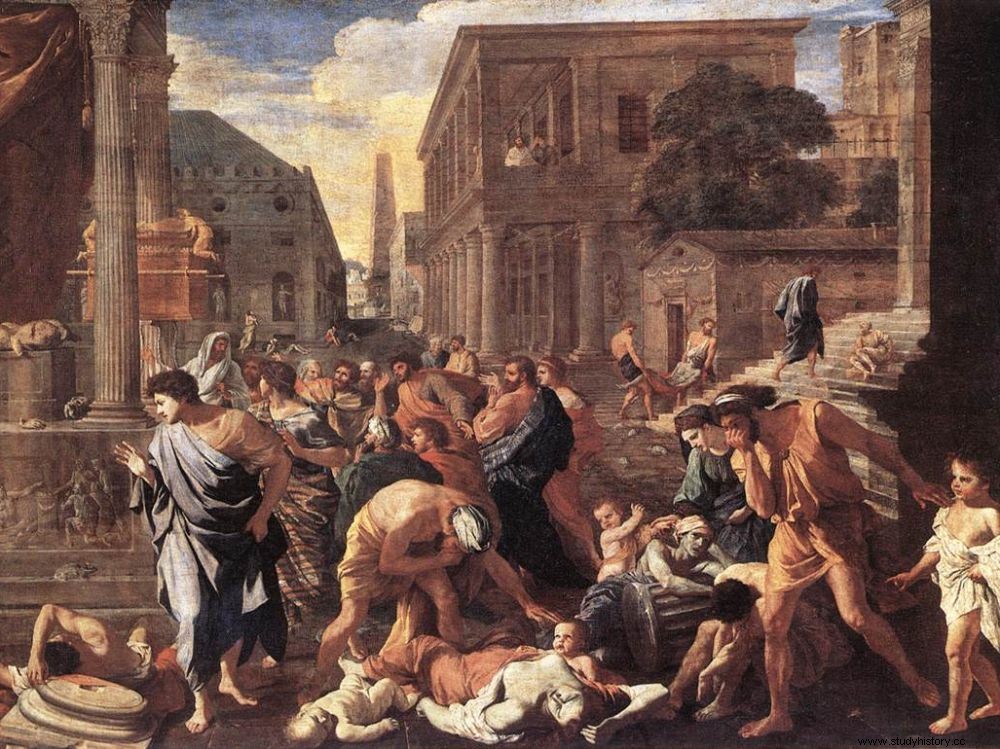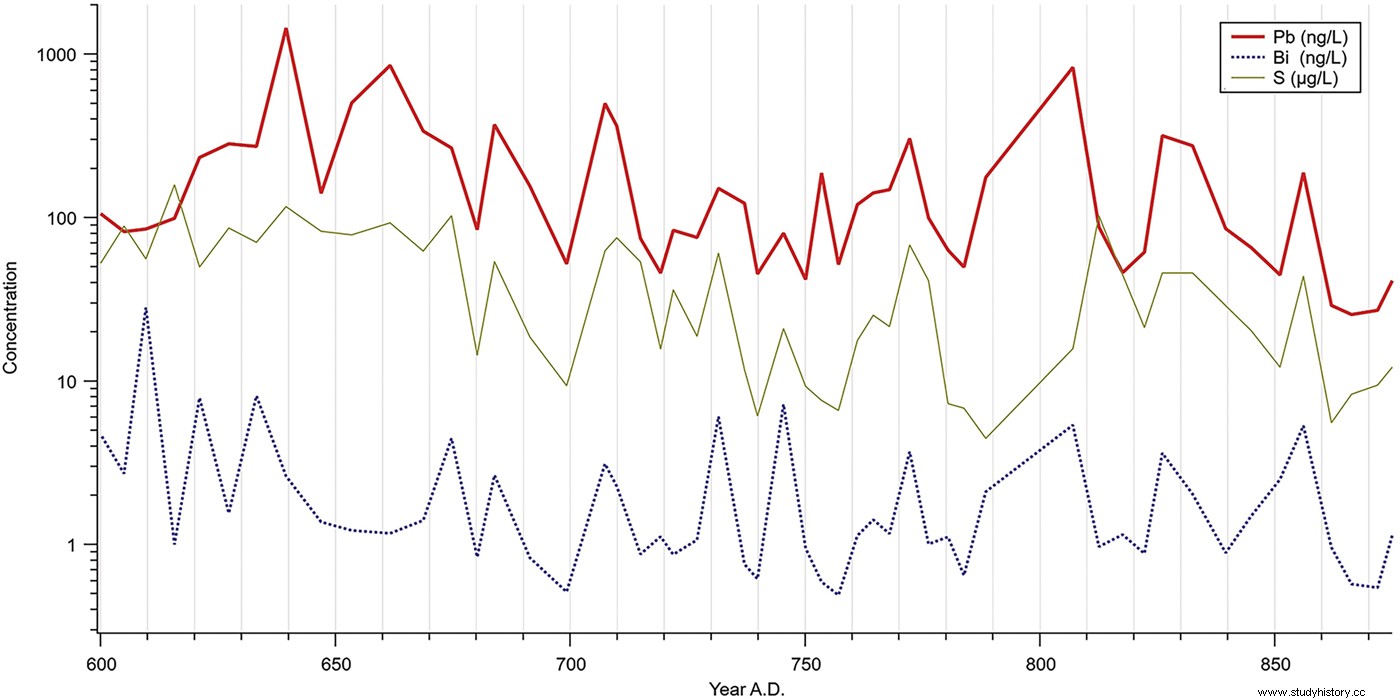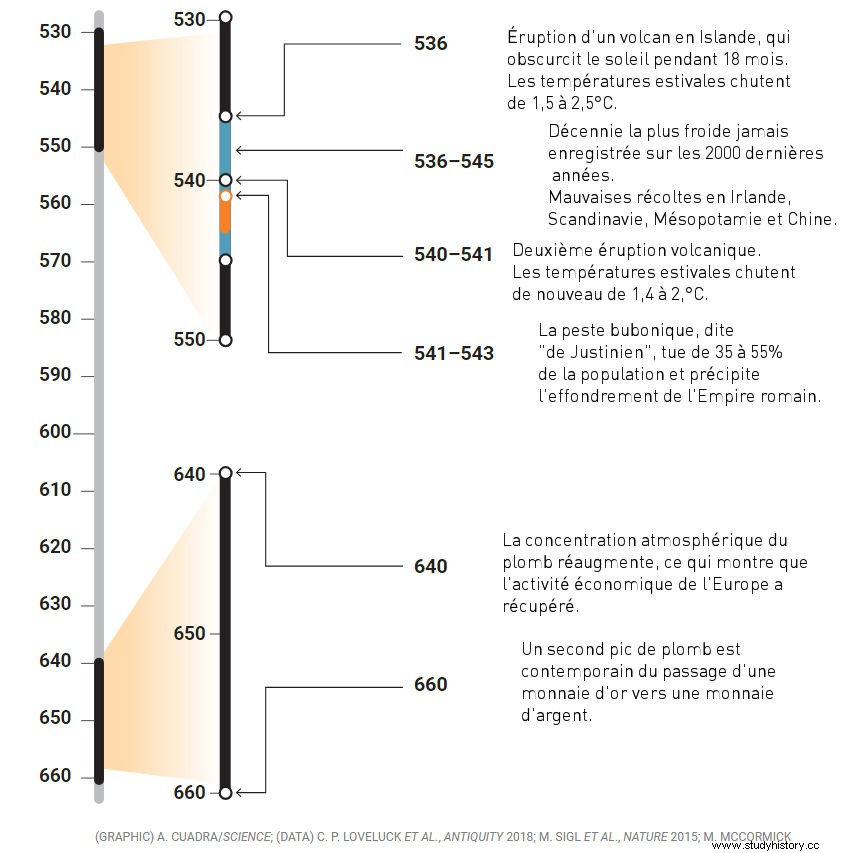A team of archaeologists and climatologists shows that the study of an ice core can deliver extremely precise historical evidence. They apply it to the period 540-660, particularly troubled for the history of the West.

Philistines stricken with pestilence , by Nicolas Poussin, depicts the plague of Justinian, which raged from 541 to 767 in the Mediterranean basin.
536, horrific year? In any case, it opened one of the darkest eras in human history, according to a study published in the journal Antiquity , taken up by the American magazine Science ."It was the beginning of one of the worst times to be alive, if not the worst year in history" , explains Michael McCormick to Science . In question, a climatic catastrophe, perhaps one or more volcanic eruptions, which would have darkened the atmosphere to the point of causing the temperature to drop by 1.5 to 2.5°C, a phenomenon described in the literature of the time, and supported by previous studies based on dendrochronology (study of tree rings)! Result:disastrous consequences for crops... and weakened societies. In 541, the first plague pandemic (Plague of Justinian) arose:a fatal blow for the Mediterranean region.
What lead isotopes in an ice core have to tell us about the past
To reach these conclusions, these scientists (archaeologists, but also climatologists) based themselves in particular on the study of the isotopes of lead contained in an ice core taken from a Swiss glacier, which makes it possible to reconstruct the past of the atmosphere over 2000 years. Which report ? Lead air pollution is indeed correlated to... the mining activity of silver mining, used to mint coins! To analyze the ice sample, the team used a laser capable of cutting thin ice slices of 120 microns, enough to achieve historical precision of the order of a few days. "We have entered a new era, where we benefit from environmental recordings as precise as historical testimonies:it's a revolution" , rejoices the archaeologist Christopher Loveluck in the columns of Science .

Evolution of lead, bismuth and sulfur concentration between 600 and 670 / Loveluck et al.
MINING OPERATIONS. At the time were indeed mainly exploited deposits of galena, a mineral species that contains traces of silver, but especially a lot of lead sulphide. By modeling air mass movements, the researchers were able to assess where the silver coins used for trade had been melted. What to evaluate the economic activity of Europe... and cross-check it with the significant events retained by the historians:climatic alterations, pandemics... The periods when the atmospheric concentration of lead increases indicate a strong economic activity. "This shows the change from gold money to silver money, and the rise of the first class of merchants" , writes in the study Christopher Loveluck. Conversely, the periods when the lead rate collapses correspond to times when the economy collapses, in particular due to epidemics such as the plague of Justinian, or the black plague of 1349-1353.
Particles of volcanic glass found in the ice
How do we know precisely what is the volcanic episode responsible for this obscure European climatic catastrophe? Some studies had previously postulated that an eruption in the tropics was involved. Others envisioned a North American volcano. But here, the team rather thinks it is the eruption of an Icelandic volcano. Indeed, microscopic particles of characteristic volcanic glass have been found in the ice core, but also in Greenland, as well as in several lakes and bogs in Europe... However, the researchers wish to confirm this point in the future by finding more volcanic samples.
Find the historical matches discovered in the diagram below.

Click to open full-page infographic in new window
